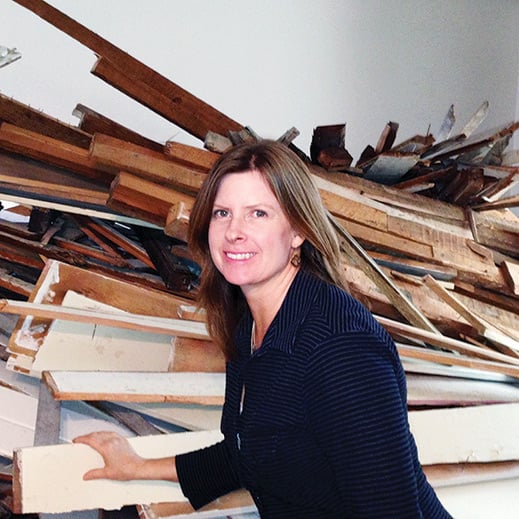Good engineers often use knowledge from one field to solve problems in another. Stephanie Winner is a case in point—after 15 years in semiconductor design, she’s become a Silicon Valley patent agent sought after for her technical, analytical, and negotiation skills.

“Patent law keeps you at the cutting edge, continually engaged with the latest and most interesting developments,” she explains. “Patent Office negotiations are like a debate—you have to prepare by performing analysis and constructing a case for a patent. It’s very appealing. It keeps me connected with research, which is what I really enjoy, and helps me avoid the boring things.”
When Winner came to MIT from Traverse City, Michigan, she majored in electrical engineering, a field she valued for its job prospects. But she minored in political science, a longtime interest, which nurtured her ability to gather, analyze, and convey information. “Political science had a phenomenal teaching staff,” she recalls. “Kids from Harvard would come over to take classes.”
Course 6-1, Electrical Science and Engineering, had just adopted the revolutionary Mead-Conway VLSI Design curriculum, which emphasized student fabrication of silicon devices. At the time, circuit developers had to handle both design and physical layout. Winner thrived on the multifaceted challenge. She interned and later worked at Fairchild Semiconductor and Schlumberger as a member of small groups that developed early graphics processors.
That led to a 10-year stint at Apple Computer, where she created silicon devices that helped the company dominate publishing and media creation. She later held key roles at semiconductor startups in both 3-D graphics and networking and earned named-inventor credits on more than a dozen graphics-related patents. But by 2000, says Winner, the growing complexity of chips meant that individuals “didn’t get to see the bigger picture.” She felt she “could only be responsible for very small pieces of design,” and her opportunities for advancement were in management rather than research.
Winner became qualified as a patent agent and won the business of a major graphics chip company. That company is now one of her clients at Zilka-Kotab, a San Jose law firm that handles patent and trademark matters.
A major benefit: working from home on a less-than-full-time basis. This gives her more time with her husband, Jeffrey Winner ’85, SM ’86, whom she met as an undergrad, and the freedom to indulge her love of building and remodeling houses. (“I need work where you see physical results—the rest of my job is just words,” she says.) The Winners have four college-age daughters and are planning a move to San Francisco.
Keep Reading
Most Popular
Large language models can do jaw-dropping things. But nobody knows exactly why.
And that's a problem. Figuring it out is one of the biggest scientific puzzles of our time and a crucial step towards controlling more powerful future models.
How scientists traced a mysterious covid case back to six toilets
When wastewater surveillance turns into a hunt for a single infected individual, the ethics get tricky.
The problem with plug-in hybrids? Their drivers.
Plug-in hybrids are often sold as a transition to EVs, but new data from Europe shows we’re still underestimating the emissions they produce.
Google DeepMind’s new generative model makes Super Mario–like games from scratch
Genie learns how to control games by watching hours and hours of video. It could help train next-gen robots too.
Stay connected
Get the latest updates from
MIT Technology Review
Discover special offers, top stories, upcoming events, and more.